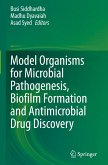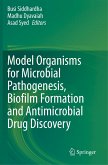This study investigated antimicrobial susceptibilities of clinical CoNS isolates in different stages of the biofilm formation process. Planktonic cells exhibited similar susceptibilities in comparison with early adherent monolayers. A mature biofilm showed similar resistance to antimicrobial eradication to planktonic cells at stationary phase. In order to investigate mechanisms of high resistance of biofilms to various antimicrobial agents, the percentages of tolerant- but-killable cells and non-killable persister cells in different bacterial populations were examined. More tolerant-but-killable cells were found in biofilms than in planktonic cultures at log phase. Persister cells were only present in biofilms, not planktonic cultures. Further study showed that ability of CoNS to adhere to polymer surfaces and grow into a highly dense mode, rather than their ability to build up biofilm matrix, contributed to their high resistance to antimicrobial agents. Finally, different agentswere tested as catheter lock solutions. Ethanol was found to be superior to most antimicrobial agents in eradication of biofilm cells.
Bitte wählen Sie Ihr Anliegen aus.
Rechnungen
Retourenschein anfordern
Bestellstatus
Storno








